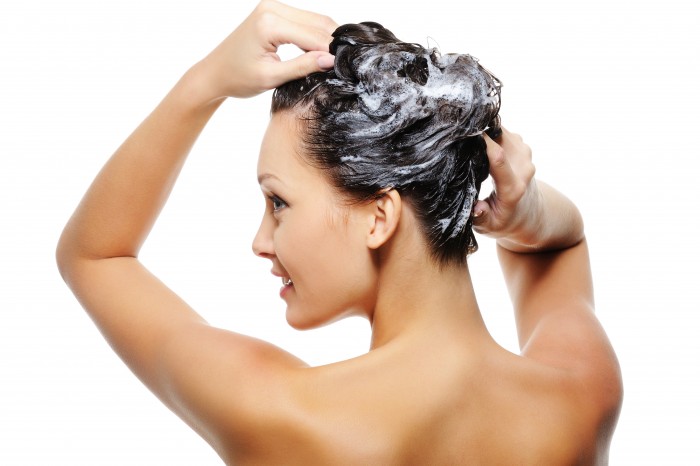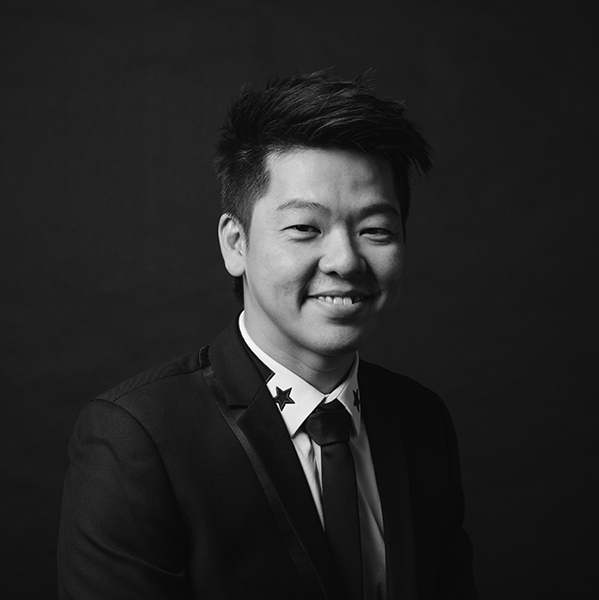Splits ends are a super real problem in Singapore. We’re already more susceptible to it than most other countries because of our crazy erratic weather and how we go in and out of the hot sun and cold air-conditioning so frequently every day.
We are also seeing split ends being on the rise because of the funky coloured hair trend that’s been gripping popular culture on our tiny island for the past few years.
https://www.instagram.com/p/B1x8qCBleGS/?utm_source=ig_web_copy_link
You would think that we’d be experts in preventing split ends by now, but that’s actually not true. We are still making a number of mistakes in our hair care routines that create more split ends on our precious tresses without us realising.
We spoke to two highly experienced hairdressers from the top hair salons in Singapore to find out exactly what habits we have that are causing those pesky split ends.
- 1. You’re not using conditioner
- 2. You’re not getting your hair trimmed regularly
- 3. You’re using too much heat on your hair
- 4. You’re using a lot of chemicals on your hair
- 5. You don’t have a proper hair care routine
- 6. You swim a lot, whether at the beach or at the pool
- 7. You are outdoors under the sun a lot
- 8. You don’t drink enough water
- 9. You’ve coloured your hair and don’t care for it later
- The experts we interviewed
1. You’re not using conditioner

We were surprised by this, but this is apparently true, according to Gary Chew, co-founder and director of mi the salon. “Many Singaporeans don’t use any hair conditioner, and this is jeopardising their hair texture,” he says.
The reason why some Singaporeans don’t use hair conditioners is because they’re not used to how it feels after. Gary explains, “Certain hair conditioners make the hair very oily and so people stop using them all together.”
The purpose of hair condition is actually to close the cuticles of the hair, which may have been opened by the action of shampooing. Closing the cuticles will mean less water damage to the hair, resulting in less brittle hair and therefore less split ends.
“Finding the right hair care to suit your needs is important, and getting a good hairstylist to advise would be the first step to avoiding split ends,” says Gary.
Kevin Chia, Color Expert Stylist at Apgujeong Hair Studio, concurs with this. He recommends using “nourishing treatment shampoos and masks at home” that can help the hair to retain moisture without suffering from water damage.
2. You’re not getting your hair trimmed regularly

Of course, getting your hair trimmed regularly does not actually directly prevent split ends, but it does help to neaten up your overall look and may indirectly contribute to lessen the chances of getting split ends.
“Regular trims are part of an essential haircare routine,” says Gary. It should be followed by using the right hair conditioner and “any supplementary hair oils or serums”.
Kevin also recommends getting your locks groomed on the regular. “The rule of thumb should be to get a trim every six weeks,” he states.
Getting a trim means you’d be cutting away your existing split ends and reducing the risks of your hair breaking even further. Your entire head of hair will also be generally easier to groom, brush, and style on a daily basis, which places less stress on your individual hair strands and indirectly preventing hair breakage.
3. You’re using too much heat on your hair

This one should be a no-brainer, but many of us are too in love with the beautiful effects heat styling can give us and can’t let go. Needless to say, excessive heat on the hair will cause brittle hair and split ends.
“Don’t overuse hot tools,” warns Gary. “If you want to use a hot tool, you should use a heat protectant spray.”
Gary also strongly discourages using hot tools on wet hair. “This would essentially fry your hair. Your hair needs to be completely dry before using any hot tools.”
Kevin echoes the same advice, calling for an avoidance of hot tools for styling if possible and using a heat protectant product before styling.
“Use the lowest possible heat setting on the tool to minimise the damage. When blow drying your hair, finish it off on the cool setting for about five minutes. This helps to seal the hair cuticle.”
4. You’re using a lot of chemicals on your hair

This is particularly pertinent to us today, where permanent blow-outs, rebonding, and bleaching or dyeing of the hair is commonly done in the hair salons.
Kevin states, unsurprisingly, that treating our hair with too much chemicals is also a huge cause of split ends. This includes treatments like bleaching, perming, and rebonding.
“Using vinegar or over-bleaching creates split ends, so people who use either and don’t take care of their hair are at risk of facing split ends,” adds Gary.
The simple solution? Avoid doing such chemical treatments on your hair. If you have to, or want to, take a good break between each of them. In the meantime, you need to also make sure you spam your hair with the good stuff and really put in a lot of effort into having a proper hair care routine.
This brings us to the next point.
5. You don’t have a proper hair care routine

While chemical treatments and lifestyle habits are certainly a cause of split ends, you could still be doing your part to minimise the breakage as far as possible by investing time and effort into a proper hair care routine.
“Our hair cannot be too acidic or alkaline, so hair care is important in ensuring that it does not swing to either extremes in order to maintain the optimum health of our hair,” explains Gary. “The people who are most prone to split ends are those that don’t maintain a good hair care routine, like not using hair conditioners or masks.
“Even when your hair is bleached, if you are religious in taking care of your hair with the right hair care routine, split ends can still be avoided.”
Kevin recommends that people pay attention to the kind of hair styling products that they’re using as well. “Avoid using too much of styling products like wax and hair spray as the hard coating on the surface of the hair can cause it to be more brittle and increase the chance of breakage.
“If styling products are needed, go for products that are flexible-hold rather than strong-hold.”
6. You swim a lot, whether at the beach or at the pool

Most of us should be able to empathise with Kevin’s point here, especially if you did a lot of swimming when you were younger, or if you still spend a lot of time at the pool now!
Whether it’s chlorinated water in the swimming pool or salty sea water at the beach, immersing your hair in either of these for extended periods of time will certainly dehydrate your hair strands, causing it to become more brittle.
7. You are outdoors under the sun a lot

At the risk of sounding like a broken record, we’re going to repeat again that dehydration is a huge cause of split ends, so it’s no surprise that Kevin warns those of us who spend a ton of time under the hot Singapore sun that we are at higher risk of getting split ends.
If you find yourself not being able to avoid outdoor sports or other activities, make sure you use a good cap to protect both your hair from the dehydrating heat of the sun, and your scalp from UV damage. That’s what we call killing two birds with one stone.
8. You don’t drink enough water

We can’t deny the wisdom of Kevin’s advice here. Hair is, after all, produced by our body, so how healthy our body is can also make a huge difference in how healthy our hair is.
“Drink more water and have a health, balanced diet,” recommends Kevin. “This is so that your body has all the nutrients it needs to produce strong and shiny hair.”
We agree a hundred percent!
9. You’ve coloured your hair and don’t care for it later

Colouring your hair is a big commitment not just to your physical appearance, but in the steps you take after that to help protect your hair against any further damage. One way to do this is to seek the help of professionals.
“Stylists are trained and equipped to advise you on proper home care routine for coloured hair, and tailor it based on your hair needs and lifestyle,” Gary explains. “By making regular hair trips to salons, we can observe the condition of your hair and analyse to see how your hair is fairing and pitch the best formula for your hair.
“For bleached or permed hair, it is advisable to come by once a month. For coloured hair, once every two months should be fine.”
When you’re rocking a funky purple or green hairdo, it’s unlikely that you’re not also going to want to style it in an appropriately funky way to show off as much of that colour as possible. However, remember also take appropriate care of your hair while you’re doing that.
“When using heat styling tools, do so on a low to medium heat setting, and use a heat-protectant product,” advises Kevin.
“Wash your hair with lukewarm water, but rinse with cool water. Warm water helps open cuticles on the surface of your hair to lift dirt and oil more easily, while cool water closes the cuticles and gives you a smooth, shiny finish.”
These tips from Kevin not only helps to prevent your chemically-treated hair from breaking into split ends, but also reduces colour fade-off, prolonging your dye job for longer. Two benefits in one tip? Yes, please!
The experts we interviewed
Gary Chew, Co-founder and Director of mi the salon

With more than 20 years of experience behind him, Gary can be said to be at the forefront of the hairdressing scene here in Singapore. Gary trained under British celebrity hairdresser Trevor Sorbie, and he has since been called “most-value-for-money Michelin-star-quality Singaporean hairdresser you are ever going to get”.
Aside from being I.D. Artist, Gary is also the head of education at mi the salon, and also regularly travels around Asia Pacific as L’Oreal Professionnel’s ID artist to conduct workshops and seminars.
Kevin Chia, Colour Expert Stylist from Apgujeong Hair Studio

Passion is the key to success. This quote both inspires and reminds Kevin to create the best hairstyle for everyone. His inspiration comes from images, shapes, colours and these details guide him to create bespoke haircuts and hair colours for his clients.
A highly experienced stylist with 12 years’ experience in the industry, Kevin is the Color Expert Stylist at Apgujeong Hair Studio in Bishan Junction 8. He specialises in precision haircuts, fashion/creative colouring, and up-styling. These skills are his tools in creating styles that bring out his clients’ inner & outer beauty.


